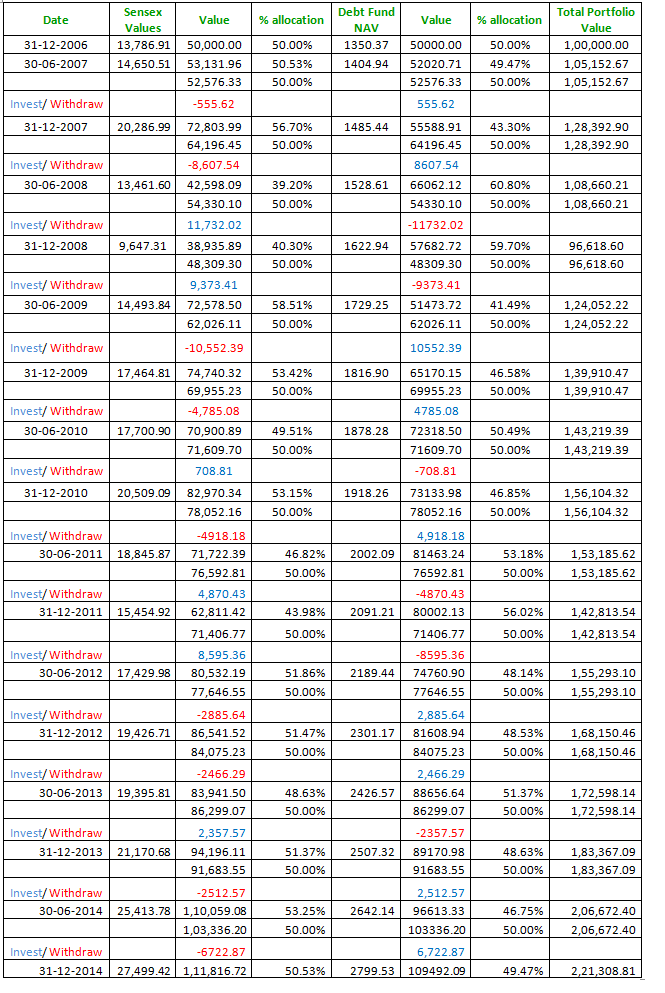What Is Asset Allocation and Why Is It Important Your Finances Simplified
Post on: 2 Май, 2015 No Comment

What Is Asset Allocation and Why Is It Important?
One of the things that investment gurus always emphasize is to diversify, diversify and diversify. Supposedly, diversification will help improve the overall performance of your portfolio since it doesn’t ride on just one investment vehicle. The trouble now is this, with over thousands of stocks, bonds, and mutual funds to choose from, how can we correctly pick the right investment?
Some investors may end up studying different companies that sell stocks in order to choose the best stock picks, but doing so may just be the wrong approach. Instead, an investor should decide on what mix of stocks, bonds and mutual funds you would like to hold. This type of strategy is called asset allocation.
What Is Asset Allocation and Why Is it Important?
Investing always rides on a certain amount of risk. The more risk an investor is willing to take, the more returns he is bound to get. However, risk is also associated to loss. There are certain types of asset classes that are more prone to risk but will also give higher returns, while there are also asset classes that give less in returns but are considered to be generally safer.
Asset allocation is a type of investment technique that attempts to balance the risk and return ratio by diversification. Meaning, an investor’s assets will be divided into different categories such as stocks, bonds, cash, real estate, and derivatives. Since each asset class has different returns and risk, each will behave differently over time. Some assets in a certain class may perform well at a particular period while others may not.
For example, local real estate may be booming, while the stock market may be experiencing some volatility. The rationale towards allocating your assets is that whether the market at one type of investment class may be experiencing problems, your assets from other classes will still pull your portfolio up. There are however some investors who deem this method to be mediocre, however, most investors generally see this method as the best protection against major loss. Below are the different types of asset classes that each investor must have in their portfolios.
Common Investment Choices Stocks
Among all the asset classes, stocks by far offers the highest returns. In exchange for this, stocks also have a history of high volatility, making it one of the riskiest investment vehicles available. As of January 13, 2011, there are currently 2,872 listings in the NASDAQ.
Each stock pick offers different returns, and it depends upon the investor which type of stock he would choose. The stock market is characterized by a trade-off between risk and return, the higher the risk that an investor is willing to undergo, the higher the potential of reward. Despite high returns and dramatic losses, stocks have shown positive returns as long as the investor has the time to ride out the volatility of the market. And although each stock pick will have varying return on investment rates, the average growth of stocks is around 10-12%.
Bonds in general are considered to be less risky than stocks. First of all, bonds give a promise to return the value of the security at the time bought upon its maturity. Stocks do not offer such a promise. Bonds also pay investors a fixed rate of interest while stocks only offers dividends should the company declare it. And finally, the bonds market is less vulnerable to price swings than the stock market.
Because bonds offer less risk to the investor, then it also follows that this type of asset class provides lesser returns. Bonds can be issued by the Government such as the U.S. Treasury, it can also be issued by the state, and corporations. However, there are also bonds that offer higher returns that are similar to stocks, but these bonds are also known as junk bonds which carry high risk.An investor may be attracted to include more bonds in his portfolio especially if he does not have as much time to offset the volatility of stock markets. Bonds can be a good place to invest for those who are nearing retirement or who need to use their cash at a sooner time.

Cash and cash equivalents include savings accounts, certificates of deposits, treasury bills, money market funds, and money market deposit account. This type of investment is the safest and carries the least risk especially since accounts such as these are usually insured by the FDIC for amounts up to $250,000.
However, these accounts also offer the lowest returns. The concern that investors face with this type of investment is inflation risk. Meaning, the returns that these accounts offer may not be enough to outperform the potential inflation. Depending on the economic situation, interest rates for these types of investment range from less than 1%-3%, depending on the length of the term.
Although stocks, bonds, and cash are the most common types of investments, it is possible to include real estate in your portfolio. Real estate is considered to be one of the most stable types of investments that also offer high returns. Recently however, the housing market has encountered losses because of the 2008 recession, and until now it has yet to show signs of recovery.
In a study conducted by a finance and economics professor at Baruch College in New York City, the annual returns of real estate from 1978 to 2004 had an annual returns of 8.6%, while stocks showed a long term performance of 13.4%.
There are still other forms of assets such as precious metals, and some investors may consider including these types of assets in their portfolio. Gold has also been gaining attention now that the stock market is so volatile. By investing in assets that move up or down under different market conditions, investors can protect themselves from significant losses.
In the course of history, the returns of the four asset classes mentioned above have not moved up or down at the same time.Investors also have to consider the amount of time until they plan to use the money they invested. Typically, those who are still young and have time to recover from an economic downturn, can afford to place investments in high risk high return assets since they can afford to wait if in case the market goes down.
Leave a comment below discussing your current asset allocation for your portfolio. This can be for taxable accounts or retirement accounts. Also, let me know why you are investing in those particular assets.














